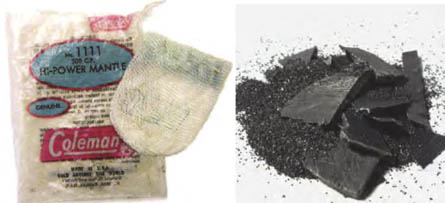Thorium, as an element has been used to varying degrees for certain non-nuclear applications since the 1890s. Due to the fact that Thorium has been classified as a source material and due to the liability risks associated with radioactivity, there has been a limited amount of research performed and other, non-radiactive materials have been utilized instead.
The following chapters describe Thorium’s use in the non-nuclear applications beginning with its use as a lantern mantle coating to increase candoluminescence during the 1880s through its use in metallic alloys, welding rod adjunct and as an optical coating for lenses, and into current uses within the petrochemical industry and as a source material for the production of medical isotopes. Although Thorium has not garnered major interest as a non-nuclear material, it does have certain applications where no readily available substitute is available.

Thorium dioxide with 1 percent cerium oxide impregnated fabric, Welsbach incandescent gas mantles (left) and ThO 2 flakes (right). Yttrium compounds now substitute.
Ragheb, M.. (2011). Thorium Fission and Fission-Fusion Fuel Cycle. 10.5772/18985.


